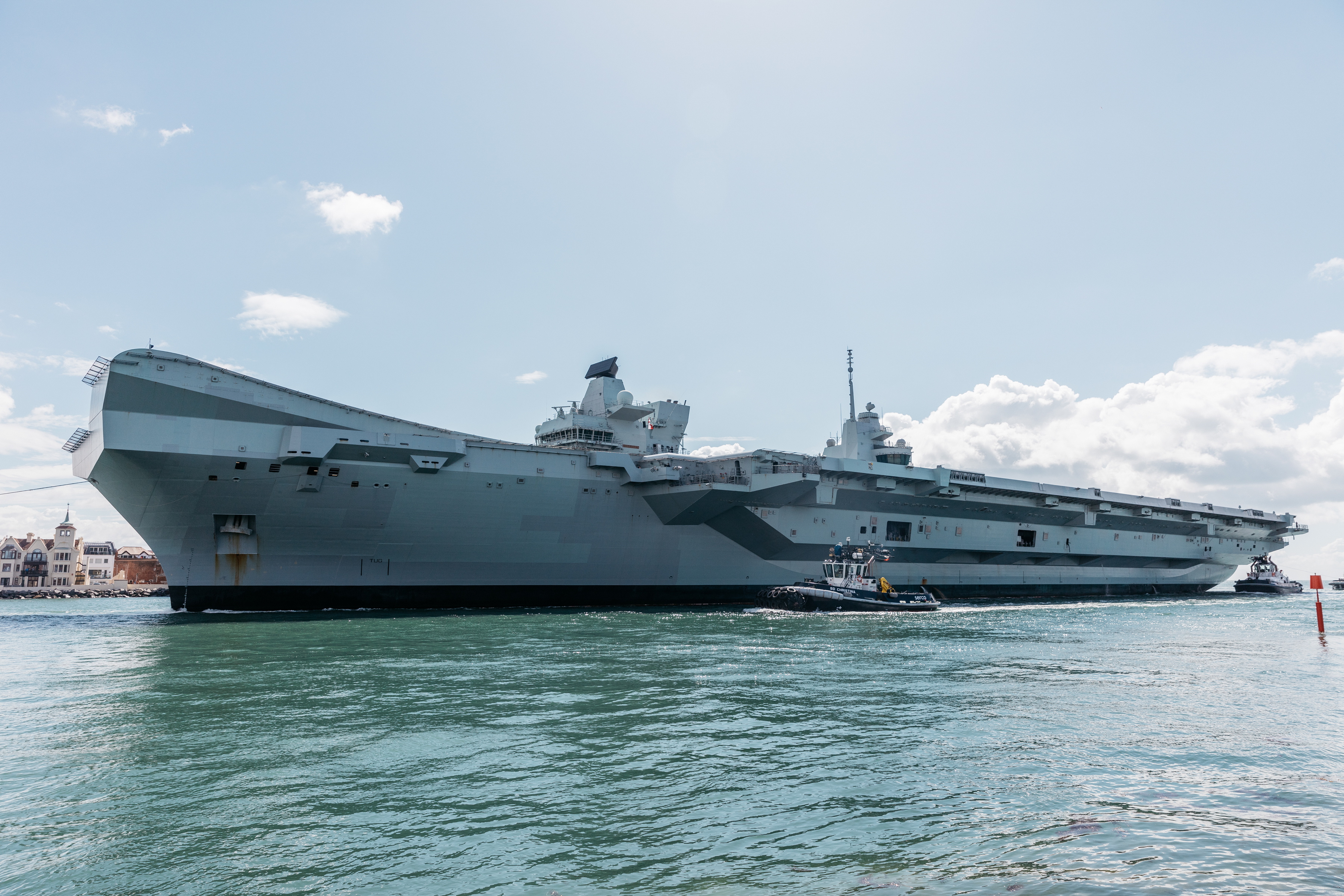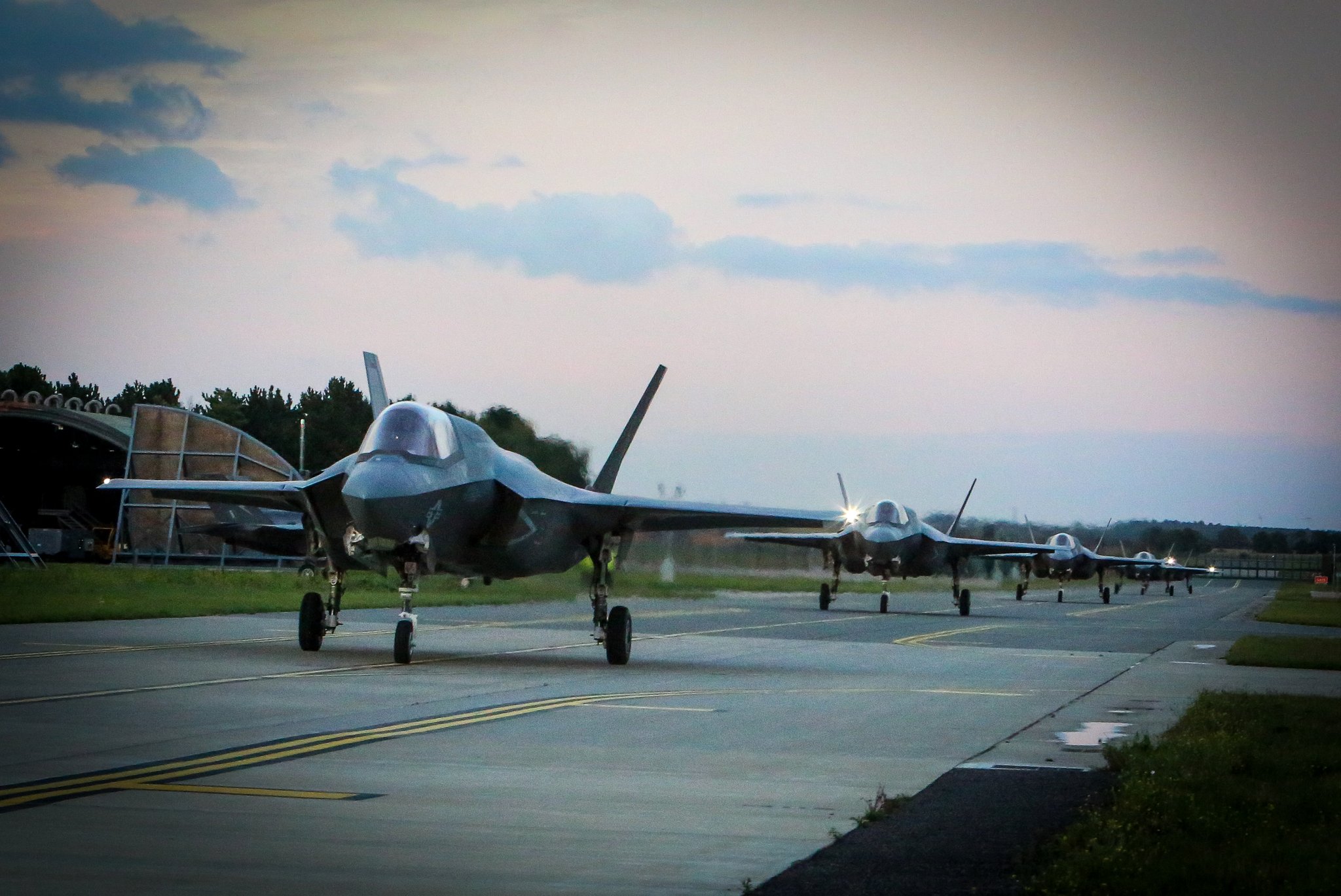
U.K.’s new carrier HMS Queen Elizabeth (R08) has departed Portsmouth, England for a short cruise ahead of training drills with U.S. Marine Corps F-35B Lighting II Joint Strike Fighters, the Royal Navy announced on Wednesday.
The “Wake Island Avengers” of Marine Fighter Attack Squadron (VMFA) 211 flew to the United Kingdom last week to train aboard Queen Elizabeth. According to a Marine Corps spokesman, 10 F-35Bs flew to the U.K. to partake in the Group Exercise, also known as GroupEx, for several weeks aboard the British aircraft carrier.
“GroupEx will establish selective interoperability to address gaps and mitigate risks within the U.S. and U.K.’s respective individual forces,” 1st Lt. Zachary Bodner, a spokesman for VMFA-211, told USNI News in a statement.
After a successful @BAES_Maritime short maintenance period it is great to again stretch our sea legs.
A brief period to get back into the swing of things before a mounting period back alongside @HMNBPortsmouth.
Then, Game Time 🇺🇳⚡🇬🇧⚡🇺🇸#Groupex #JW202
📸 @PortsmouthProud pic.twitter.com/hY2VgyKxmP
— HMS Queen Elizabeth (@HMSQNLZ) September 9, 2020
The Wake Island Avengers traveled to Royal Air Force Station Marham in the United Kingdom from Marine Corps Air Station Yuma, Ariz. ahead of the drills. The flight included one stop at Marine Corps Air Station Beaufort, S.C.
“Flying that far required an immense amount of skill from the maintainers who prepared the aircraft and the pilots who conducted mission planning, aerial refueling and vertical landings after a nine-hour flight. Realistic training is essential to maintaining our combat readiness,” Bodner said.

The U.S. Marine Corps and the U.K. Navy have for several years planned to operate F-35Bs off of Queen Elizabeth, USNI News previously reported.
The first two F-35Bs landed on Queen Elizabeth’s deck in September 2018. Last year, the U.K. Navy’s top officer said he hoped the British carrier could operate interchangeably with U.S. aircraft carriers.
“As she has demonstrated already, we can successfully field a combined U.S., U.K. carrier strike group,” Royal Navy Adm. Tony Radakin, the First Sea Lord and Chief of Naval Staff, said aboard the carrier in 2019. “I look forward to this developing further, moving to the point where we are not only talking about interoperability, but we are looking for interchangeability. ”
Bodner said the training for Squadron 211 aboard Queen Elizabeth will include a variety of drills meant to help with the aircraft’s interoperability.
“During Marine Fighter Attack Squadron 211’s time in the UK we will conduct a range of training to include; simulated flights, day and night carrier qualification, weapons integration, and expeditionary advanced basing operations,” Bodner told USNI News.
“The training is designed to validate F-35 digital interoperability with 617 Squadron in preparation of our deployment next year as part of Carrier Strike Group 21,” he added.
“The development and refinement of our shared war-fighting capabilities further strengthens our special partnership with the United Kingdom and solidifies stability within the geographical combatant command.”
Queen Elizabeth’s Wednesday departure comes after the carrier initially delayed leaving Portsmouth when several sailors contracted COVID-19, according to a BBC report.





